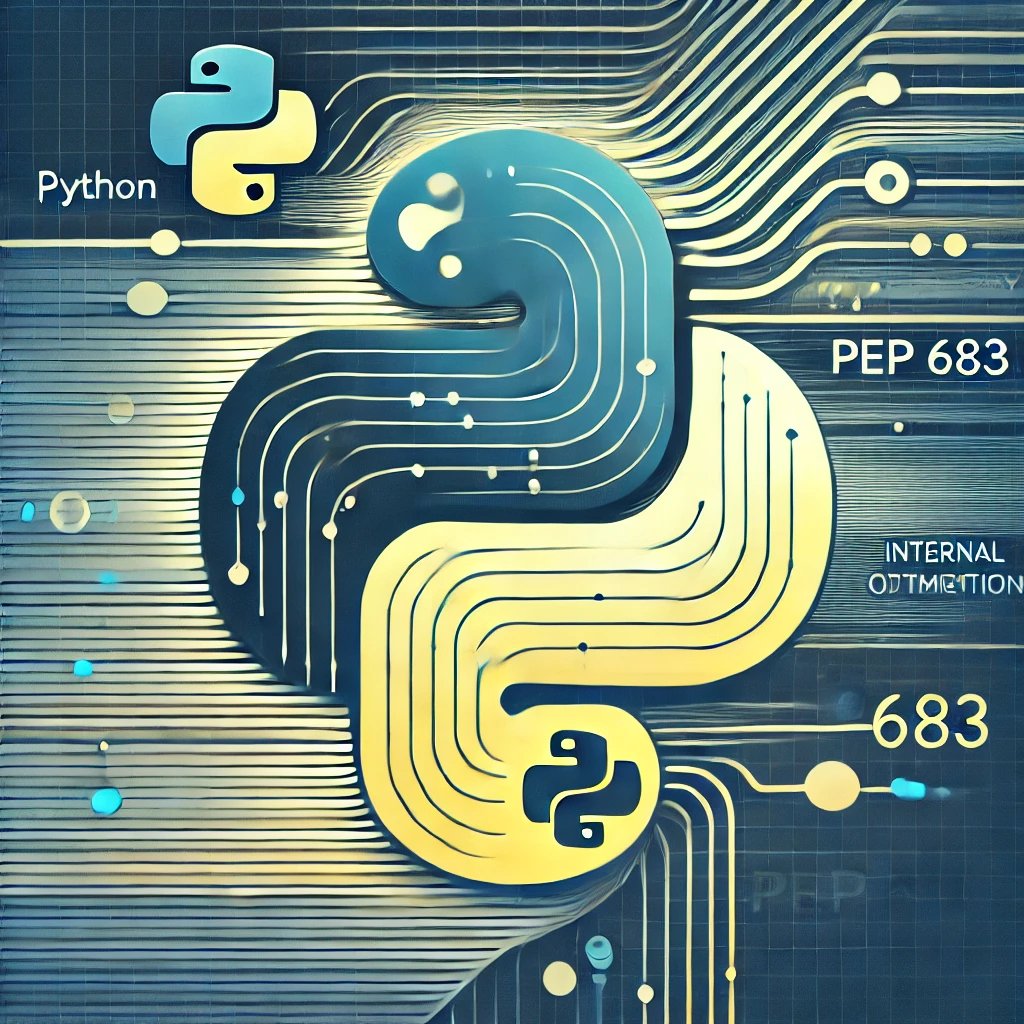
Immortal Objects in Python??!
Curious about Python’s latest speed boost? My post explores PEP 683 and “immortal objects” in Python 3.12, where core objects (like None and True) skip constant memory tracking, saving CPU load and enhancing multi-core performance. This simple change brings faster, more efficient data processing—without lifting a finger.
PYTHON
Jean-Yves TRAN
11/16/20243 min temps de lecture


Imagine Python getting a little smarter with how it handles some of its core objects, especially the ones we use constantly like None, True, and False. When we’re coding, we don’t often think about what happens behind the scenes—how these objects are managed or how Python keeps track of each instance. Yet these details matter, especially when Python is running data-heavy applications in a world that demands faster, more scalable performance.
Let’s dive into PEP 683: Immortal Objects Using a Fixed Refcount—a recent proposal that aims to make Python faster by managing memory more efficiently. Think of this as a tune-up under Python’s hood that could ultimately benefit data scientists, ML engineers, and anyone running Python code on a large scale.
Immortal Objects in a Nutshell


Python’s core runtime uses a system called reference counting to manage memory. Every time you create an object (like a number or string), Python tracks how many places that object is used. If the count drops to zero, Python frees up the memory. Simple, right? But here’s the catch: certain objects are used so frequently that this constant tracking can slow things down.
PEP 683’s solution? Mark frequently-used objects as “immortal” so that Python doesn’t need to keep track of their reference count anymore. These objects won’t hit zero, so they’ll never need to be freed up during runtime. This means fewer memory checks, faster performance, and less hassle for Python’s memory manager. Cool, right?
What’s In It for Data Science and ML?
So, you’re probably wondering: "How does this make a difference to my work in machine learning or data analysis?" Great question! Here are some concrete ways in which this change, while internal, could indirectly enhance your Python experience:
Better Performance in Multi-Core Processing
Imagine you’re training a machine learning model or processing a large dataset with multiple threads or processes. Immortal objects will minimize the memory overhead in such multi-threaded environments. Less time spent updating memory reference counts means faster, more efficient processing, which is especially valuable in high-performance data workflows.
Slightly Faster Execution in Data Pipelines
In data science, speed matters. Even slight delays add up when you’re processing massive datasets or running iterative machine learning workflows. By eliminating unnecessary memory operations on common objects, immortal objects can give your code a slight boost in efficiency without requiring any changes to your workflow.
Smoother Multi-Interpreter and Forking Support
Many advanced data setups leverage multi-interpreter or process forking (such as with pre-forked server architectures). Immortal objects will make it easier for Python to handle such configurations, making complex, multi-threaded operations smoother and possibly reducing crashes or bugs due to memory issues.
What Do You Need to Do to Get These Benefits?
Here’s the best part: you don’t need to do anything special. These improvements are baked into Python 3.12 and beyond. Just update your Python version, and you’ll automatically benefit from the performance improvements that come with immortal objects. Your code doesn’t need any adjustments. If you’re using libraries like pandas, NumPy, or scikit-learn, the internal optimizations will likely trickle down to enhance these libraries, too.
A Look Under the Hood: How It Works
If you’re curious about the technical side, here’s how Python achieves this:
Python marks certain objects (like None, True, and False) with a high reference count value, effectively marking them as “immortal.”
This means Python’s memory manager skips tracking these objects’ reference counts. They don’t need cleanup because they’ll never reach zero.
This approach significantly reduces the CPU time spent on memory tracking for high-use objects and cuts down on multi-core memory conflicts.
By the time you’re running Python 3.12, you’re benefiting from these behind-the-scenes improvements without lifting a finger.
And here’s the scoop: Python 3.13 didn’t make any big changes to the immortal object improvements we first saw in Python 3.12.


Final Thoughts
In a world where data is getting bigger and processing needs are growing, Python is taking small but impactful steps to become faster and more scalable. While PEP 683 might seem technical, its impact could resonate in fields like data science and machine learning, where efficient resource handling is key to scaling applications.
So, if you’re into data science, machine learning, or just a big fan of Python, upgrading to the latest version is one simple way to keep your toolkit lean and mean. Imagine: the next time you process data or train a model, Python is doing its job a little faster, thanks to a bunch of "immortal" objects working quietly in the background!
SOURCES:
PEP 683 – Immortal Objects, Using a Fixed Refcount
https://peps.python.org/pep-0683/
